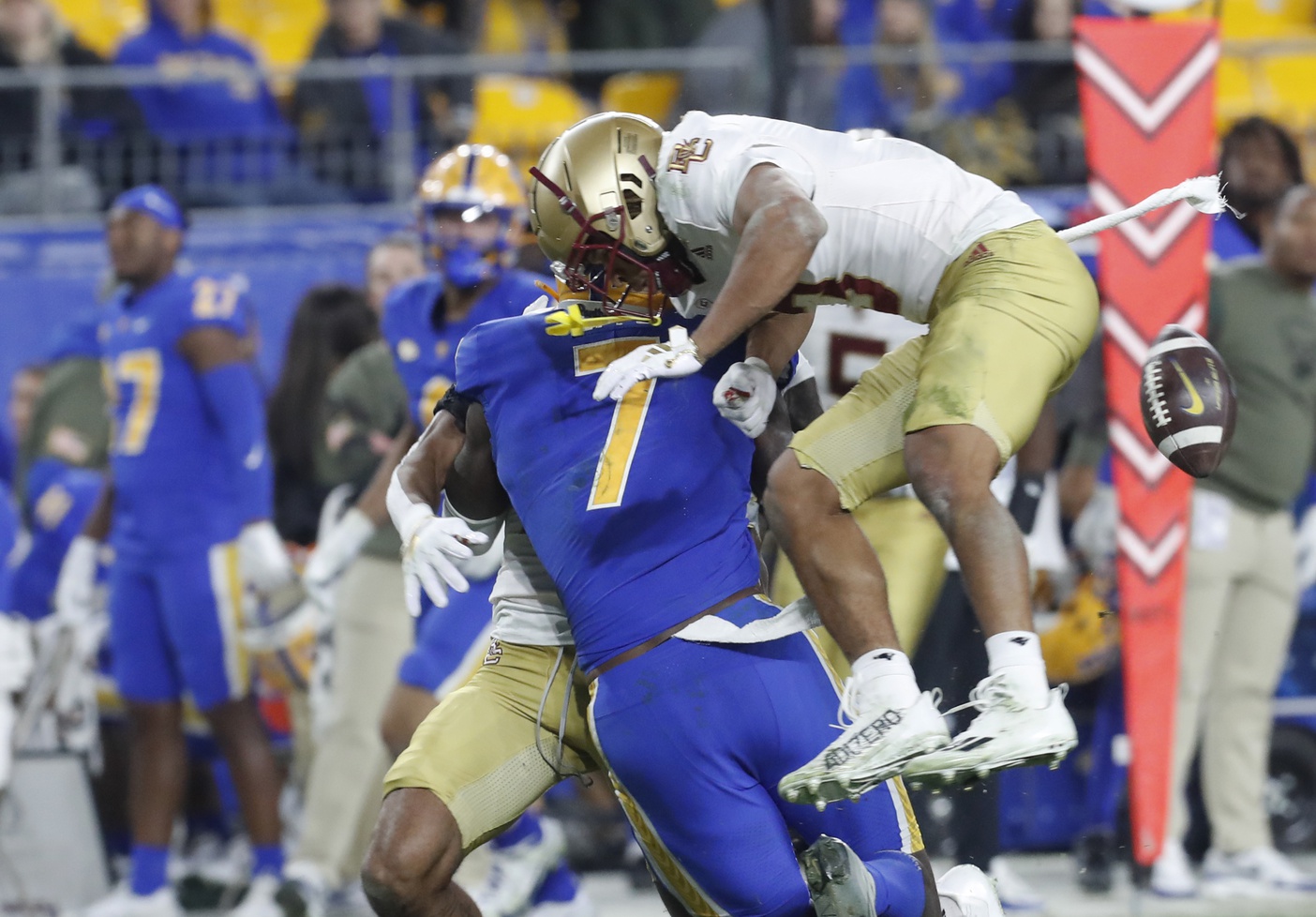College football is a complicated sport with plenty of rules, but none is as hotly debated as the “targeting” rule.
Football is violent, but there’s an emphasis on player safety. But sometimes, efforts to clean up the sport go awry.
Here, we discuss the controversial targeting rule, its definition, and the rules surrounding the sport’s most unique penalty.

What Is College Football Targeting?
Targeting was created to curtail dangerous hits on defensive players. The NCAA defines targeting as any hit that “goes beyond making a legal tackle or a legal block or playing the ball.”
Pretty simple, right? About as clear as mud.
MORE: Simulate the College Football Season with CFN’s College Football Playoff Predictor
This typically means either an unnecessary hit on a defenseless player or a forcible hit to the head or neck area.
There’s a third part, one designed to protect the tackler. If a player leads with the crown of his helmet, it’s targeting. Basically, if a player is looking down when he hits another player with the top of his head, it’s targeting, as that tackle in dangerous.
The goal is to cut down on the amount of dangerous hits, and it probably has done that. The issue is that targeting can be tricky.
For example, offensive players hardly ever get called for targeting. Also, the rule often punishes unfortunate hits as much as unnecessary hits. Players can get called for targeting if they trip in an unlucky way or accidentally make a tackle slightly too high.
Some people believe the consequences of targeting are too harsh as it is the harshest penalty in college football.
What Are the Consequences of Targeting?
When a targeting foul occurs (or a referee suspects it may occur), targeting is called, and a review is automatically triggered.
This is the only review in college football that cannot “stand.” Either the call is overturned, and no targeting is given, or it is confirmed, and a 15-yard penalty and automatic first down are enforced.
There’s more bad news for the guilty player. Targeting is a “one strike and you’re out” rule.
When a player is called for targeting, they are ejected from the game. If the foul occurs in the second half of a game, the player is also suspended for the first half of the following game.
The rule is designed to discourage players from committing dangerous hits, which is understandable. But not everyone will agree when the flag is thrown, even after review.
College Football Network has you covered with the latest news and analysis, rankings, transfer portal information, top 10 returning players, the college football season schedule, and much more!

